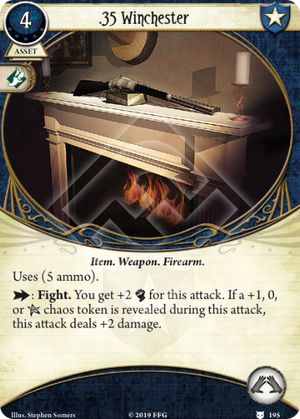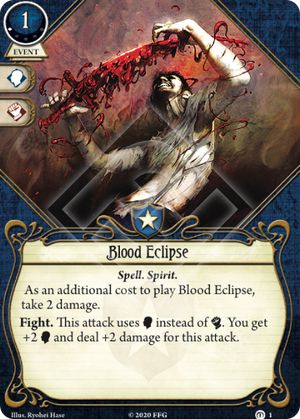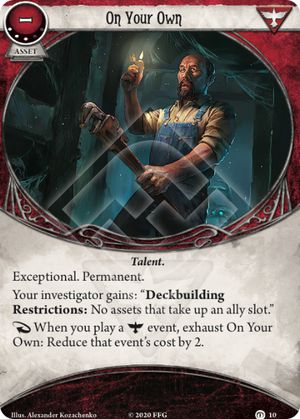
This card is better than it looks, competing with some of the better weapons available at level 0. As pointed out in another review, in easier fight tests the damage the Winchester deals per action is close to other weapons such as the .45 Thompson and .45 Automatic, though slightly inferior for easier tests. However, it actually deals more damage than any other level 0 weapon when you are facing tough fight tests, such as when your final skill value is equal to the test, when it deals about 3 times more average damage than the .45 automatic (try out the math to see it's true). This happens more often when you are using an investigator with relatively lower fight (such as 3 combat with Skids), so the Winchester has more value for these investigators if you need to have a way to deal damage. Conversely, investigators with 5 base combat benefit less from the Winchester.
The other things to consider when deciding to use the Winchester are that it takes up 2 hands slots, and that the damage it deals comes in packages of 1 and 3. The 2 hand slots might be less of a problem compared to the Thompson, for example, since the Winchester is cheaper to play, so you can potentially use it quickly and replace it with other hand assets more easily than playing the more expensive thompson. The damage dealt is definitely something to consider. I think doing 1 or 3 damage might not cause overkill more often than 2 damage attacks, since 1 and 3 health enemies are pretty common. But you could in theory deal 1 damage twice, miss, then deal 3 damage to a 3 health enemy, which would be far from ideal. So it's definitely best to use the Winchester when the 3 damage is needed. In the same way, being able to adapt your plan depending on how much damage you deal after each attack can be very effective. This works best if you have alternate ways of dealing with enemies that don't take hand slots, like evading or allies that damage such as Alice Luxley or Beat Cop.
Not to mention, it is really fun using the Winchester! You look forward to seeing whether the revealed token will give you a critical hit, unlike other weapons where the token can only have a negative effect.



